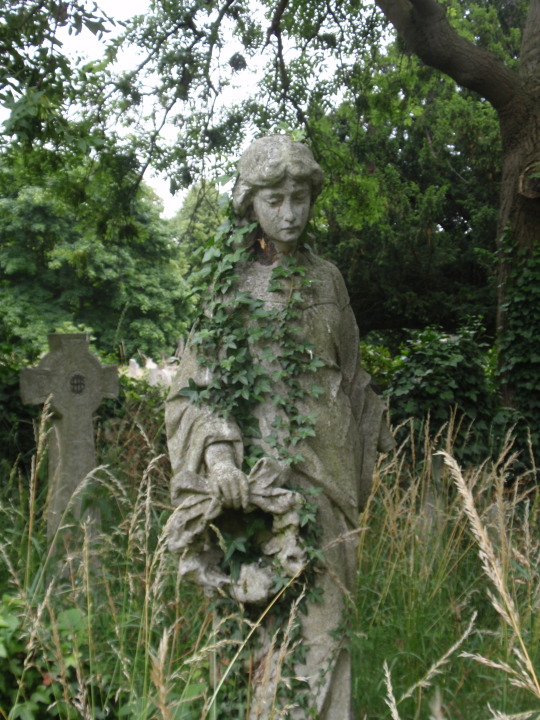graversjournal-blog
390 posts
Member of the Graveyard Rabbits Association
Don't wanna be here? Send us removal request.
Photo
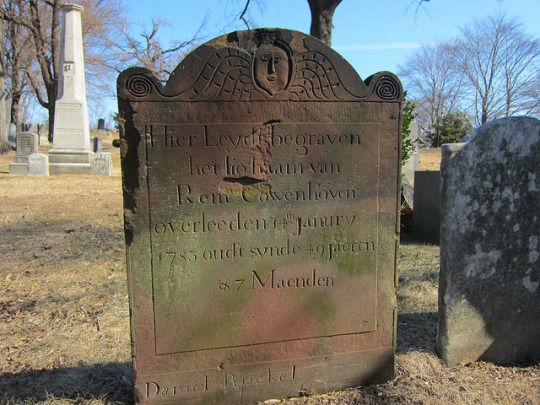
Dutch Grave by allisonmeier on Flickr.
What an amazing find!
6 notes
·
View notes
Link
Author of "Oldest Living Confederate Widow Tells All" and "Local Souls" describes the joys of living next to a cemetery
5 notes
·
View notes
Photo
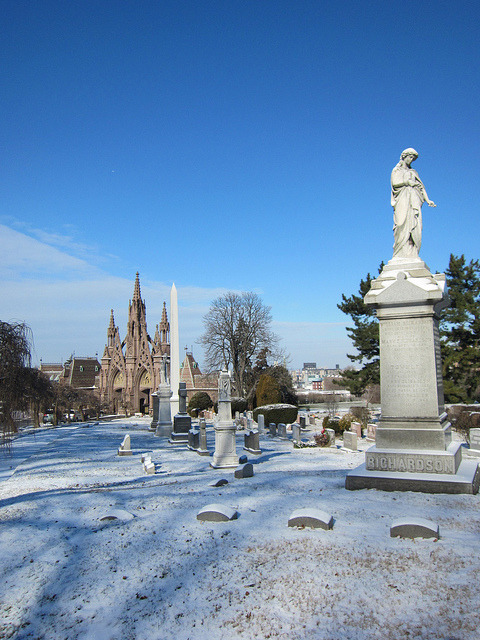
Snow in Green-Wood Cemetery by allisonmeier on Flickr.
Flickr OP: Brooklyn, NY
15 notes
·
View notes
Photo
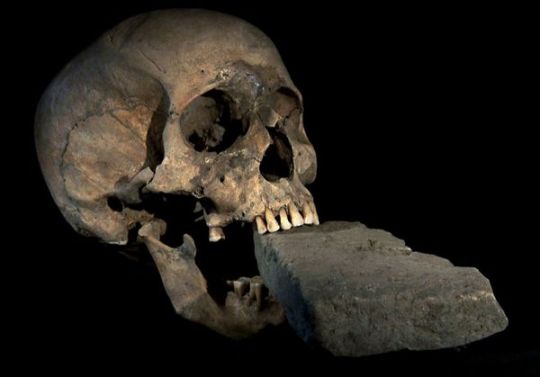

A female “vampire” unearthed in a mass grave near Venice, Italy, may have been accused of wearing another evil hat: a witch’s.
The 16th-century woman was discovered among medieval plague victims in 2006. Her jaw had been forced open by a brick—an exorcism technique used on suspected vampires in Europe at the time.
The discovery marked the first time archaeological remains had been interpreted as those of an alleged vampire, project leader Matteo Borrini, a forensic archaeologist at the University of Florence in Italy, said when the skull was first revealed in March 2009.
New investigations have now shed light on who this “vampire” was, why people may have suspected her of dabbling in the dark arts, and even what she looked like.
“There is a piece of history to rewrite, to see this individual again after 500 years and also try to understand why the myth of vampire started,” Borrini says in a new National Geographic Channel documentary.
Borrini found the vampire skull while digging up mass graves on the Venetian island of Lazzaretto Nuovo.
Belief in vampires was rampant in the Middle Ages, mostly because the process of decomposition was not well understood, Borrini says.
For instance, as the human stomach decays, it releases a dark “purge fluid.” This bloodlike liquid can flow freely from a corpse’s nose and mouth.
Since tombs and mass burials were often reopened during plagues to add new bodies, Italian gravediggers saw these decomposing remains and may have confused purge fluid with traces of vampire victims’ blood.
In addition, the fluid sometimes moistened the burial shroud near the corpse’s mouth so that the cloth sagged into the jaw. This could create tears in the cloth that made it seem as if the corpse had been chewing on its shroud.
Vampires were thought by some to be the causes of plagues, and the superstition took root that shroud-chewing was the “magical way” that vampires infected people, Borrini said.
Inserting objects—such as bricks and stones—into the mouths of alleged vampires was thought to halt the spread of disease.
To flesh out more details about the Venice vampire, Borrini assembled a team of scientists.
Paleonutritionists pulverized some of the woman’s remains—discovered along with the skull—to look for certain elements in food that settle in the bones and endure after death.
The team found that the woman had eaten mostly vegetables and grains, suggesting a lower-class diet.
DNA analysis revealed that the woman was European, and a forensic odontologist ascertained the woman’s age by examining the skull’s long canine teeth with an advanced digital x-ray device.
The results showed that the woman was between 61 and 71 years old when she died. Borrini was “quite shocked” by this finding—most women didn’t reach such advanced ages in the 16th century, he says in the documentary.
In medieval Europe, when fear of witches was widespread, many people believed the devil gave witches magical powers, including the ability to cheat death.
That means such a relatively old woman—suspected after death of being a vampire—may have been accused in life of being a witch, the researchers say.
But old age alone probably wouldn’t spur an accusation of witchcraft, said Jason Coy, an expert in European witchcraft and superstition at the College of Charleston in South Carolina, who was not part of the new study.
Though average life expectancy in 16th-century Europe was low, around 40, that doesn’t mean most people died at 40, he said via email. It means infant mortality was high, bringing down the average. If people lived past childhood, they stood a good chance of living into their 60s.
So the Venice vampire was old, but not “freakishly so,” Coy said.
Rather, Europe’s misogynistic society specifically linked old women with witchcraft, because people “assumed that old women—especially widows—were poor, lonely, weak, and unhappy, and thus could be lured by the devil’s promises of wealth, sex, and power into forming a pact with him,” Coy said.
At the height of the European witch-hunts, between A.D. 1550 and 1650, more than 100,000 people were tried as witches and 60,000 were executed—the vast majority of them old women.
Germany was the witch-hunt heartland, Coy said. Italy was relatively “mild” in its treatment of witches, although the country was also rife with superstitions and protective charms.
In many historical references of the time, witches were said to eat children—possibly the origin of the Hansel and Gretel story, he added.
“So you could say that there is a tenuous link between flesh-eating zombies like your ‘Venetian vampire’ and witches: They were both feared for breaking the ultimate taboo—eating human flesh.”
For the last step in forensic archaeologist Borrini’s work, he called on 3-D imaging experts to produce a digital model of the skull.
He then put markers where muscle attachments would have existed to reconstruct and rebuild the Venice vampire’s face. The result was the face of an “ordinary woman,” which perhaps brings the accused some “historical justice” centuries after her death, he said.
“It’s very strange to [leave] her now,” he lamented, “because after this year it’s sort of a friendship that’s created between me and her.”
3K notes
·
View notes
Link
At cemeteries across New Orleans, All Saints’ Day (Nov. 1) marks the culmination of a period of cleaning and sprucing up family burial grounds. Heather Knight is teaching a group of first-year Tulane students to look at these unique, aboveground tombs with fresh eyes.
The Karstendiek tomb in Lafayette Cemetery No. 1 in uptown New Orleans is a rare example of a pre-fabricated cast-iron tomb. With Gothic Revival elements, including delicate pintelles and tri-foil arches, the tomb was a prop model for the film Interview With the Vampire. (Photo by Paula Burch-Celentano)
The students in the cemetery architecture TIDES (Tulane InterDisciplinary Experience Seminar) course sketch and journal as they visit some of the city’s sepulchral sites. “Whatever architectural style was in vogue at the time of building a tomb, that is the style we see, whether it’s Greek Revival, Gothic Revival or Italianate,” says Knight, an adjunct assistant professor in the School of Architecture. Among the cemeteries the students explore is Metairie Cemetery, the final resting place for more kings and queens of Carnival than anywhere else, says Knight. In Lafayette Cemetery No. 1, across from Commander’s Palace restaurant, students see a rare, cast-iron Gothic Revival tomb. Knight points out iconography that symbolizes death — a broken rose stem, an hourglass with wings, torches turned upside down. An architectural conservator, Knight has a master’s degree in preservation studies from the Tulane School of Architecture. She operates the restoration business, Chaux Vive Architectural Conservation and Consulting, whose name refers to “hot lime,” a substance used to make whitewash and plaster for tombs and historic homes. Knight also is on the board of Save Our Cemeteries. In the TIDES class, Knight introduces students to the Southeastern Architectural Archive at Tulane, where primary sources such as 19th-century cemetery maps, architects’ drawings with tomb specifications and a wrought-iron cross with zinc rosettes are housed. Knight hopes that the students will appreciate the work of Creole craftsmen who for generations have fashioned New Orleans’ intricate burial places. “When you preserve historic tombs,” she says, “you’re not only preserving the architectural details, but they represent the craftsman’s hands that labored over them, the brickwork, the historic pigments, the labor of stone masons.”
From: http://tulane.edu/news/newwave/103112_cemeteries.cfm
2 notes
·
View notes
Photo
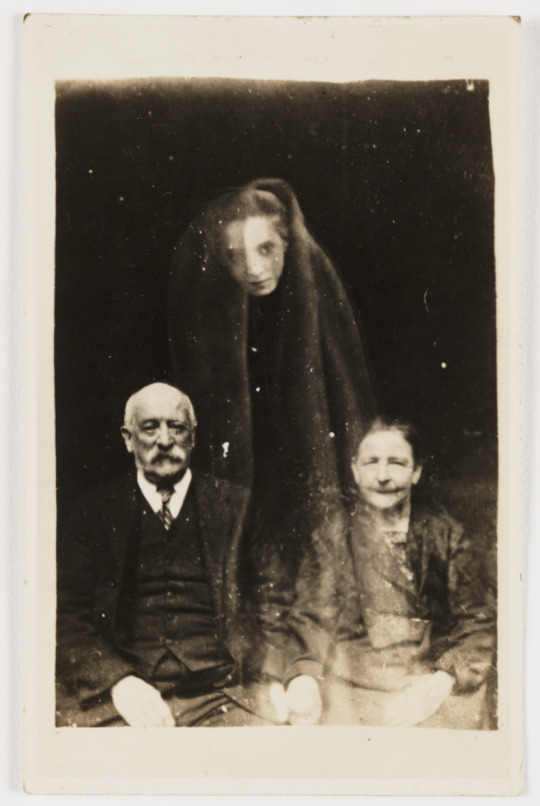
William Hope (1863 - 8 March 1933), was a pioneer of so-called «spirit photography». On 4 February 1922 the Society for Psychical Research and the paranormal investigator Harry Price attempted to prove that Hope was a fraud during tests at the British College of Psychic Science. Price secretly marked Hope’s photographic plates, and provided him with a packet of additional plates that had been covertly etched with the brand image of the Imperial Dry Plate Co. Ltd. in the knowledge that the logo would be transferred to any images created with them. Unaware that Price had tampered with his supplies, Hope then attempted to produce a number of Spirit photographs. Although Hope produced several images of spirits, none of his materials contained the Imperial Dry Plate Co. Ltd logo, or the marks that Price had put on Hopes original equipment, showing that he had switched prepared materials containing fake spirit images for the provided materials
14 notes
·
View notes
Photo
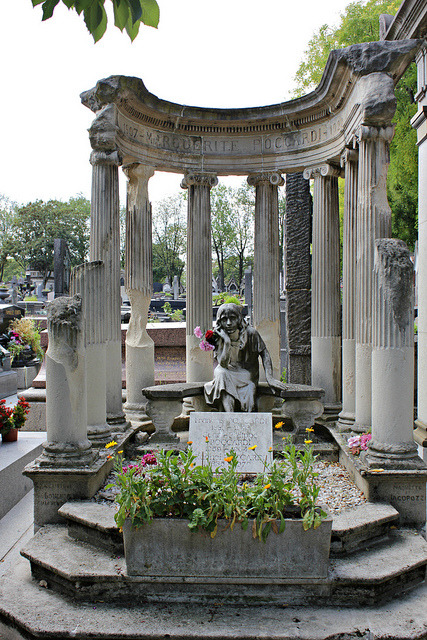
Grave of Maguerite Poccardi (1907-1920), Jean-Philippe (1959-1964) and their relatives by S. Ruehlow on Flickr.
Flickr OP: Cimetiere du Pere Lachaise, Paris - France
#Cimetière du Père-Lachaise#Père Lachaise#Paris#France#Friedhof#Cemetery#Graveyard#Cimetiere#Grab#Grave#Tomb#Grabanlage
8 notes
·
View notes
Photo
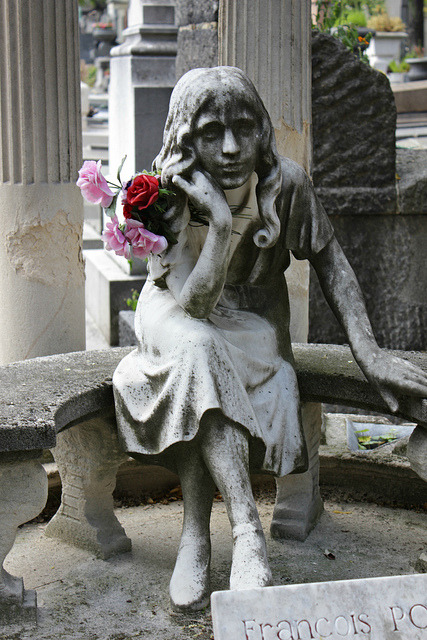
Statue of Maguerite Poccardi (1907-1920) by S. Ruehlow on Flickr.
Flickr OP: Cimetiere du Pere Lachaise, Paris - France
#Cimetière du Père-Lachaise#Père Lachaise#Paris#France#Friedhof#Cemetery#Graveyard#Cimetiere#Grab#Grave#Tomb#Grabanlage
7 notes
·
View notes
Photo
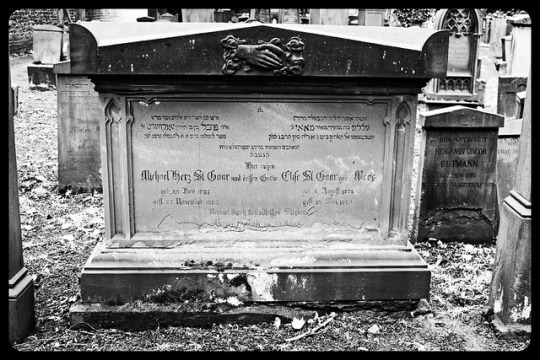
Grave of Michael Herz St. Goar (1787-1862) - Austrian Merchant - and his wife Elise Maas (1785-1863) by S. Ruehlow on Flickr.
#Alter Jüdischer Friedhof Frankfurt a/M#Alter Jüdischer Friedhof#Jüdischer Friedhof#Jewish Graveyard#Jewish#Jüdisch#Friedhof#Graveyard#Cemetery#Grab#Grabstelle#Tomb#Grave#Benjamin Jacob Gutmann#Gutmann#St. Goar
8 notes
·
View notes
Photo
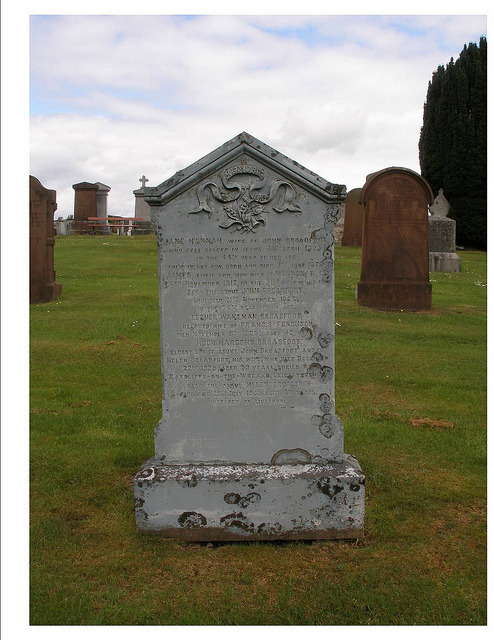
Dalbeattie Stone by midgefrazel on Flickr.
4 notes
·
View notes
Photo
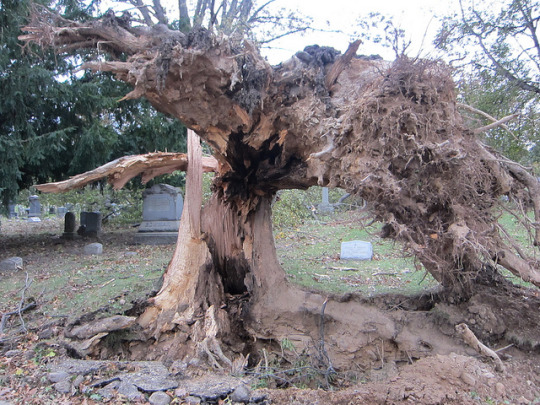
Green-Wood Post-Sandy by allisonmeier on Flickr.
Flickr OP: Damage in Green-Wood Cemetery post-Hurricane Sandy.
2 notes
·
View notes
Photo
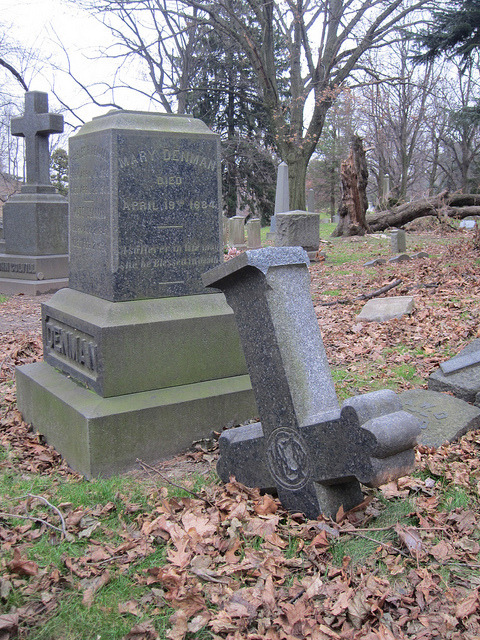
Cross in the Ground by allisonmeier on Flickr.
Flickr OP: Seen at Green-Wood Cemetery, possibly some Hurricane Sandy destruction.
5 notes
·
View notes
Photo
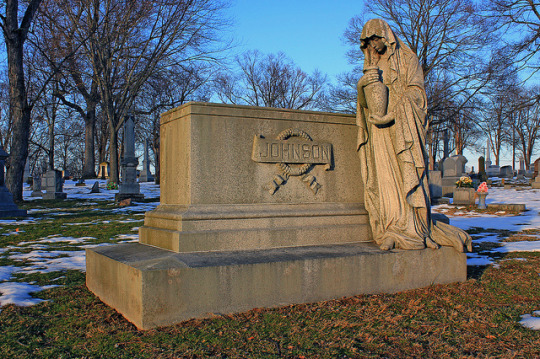
Weeping by Jenni Nicole on Flickr.
#cemetery#cemeteries#seymour#indiana#riverview#grave#stone#gravestone#graveyard#snow#snowy#sunny#sunlight#sunset
14 notes
·
View notes
Photo
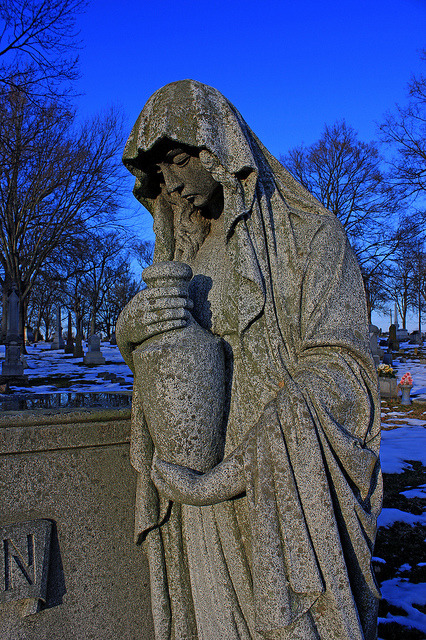
Closeup by Jenni Nicole on Flickr.
#cemetery#cemeteries#seymour#indiana#riverview#grave#stone#gravestone#graveyard#snow#snowy#sunny#sunlight#sunset
21 notes
·
View notes
Photo
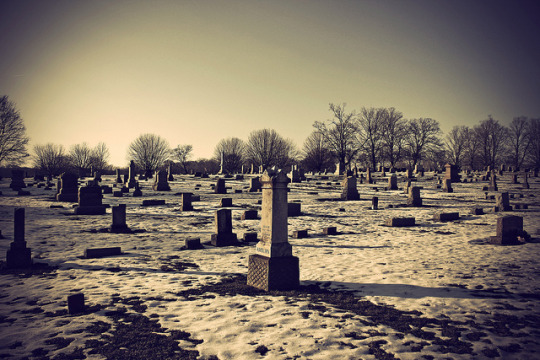
Vernon Cemetery by Jenni Nicole on Flickr.
#cemetery#graveyard#graves#cemeteries#vernon#indiana#jennings#county#vintage#pretty#snow#snowy#blue#sky#skies
6 notes
·
View notes
Photo
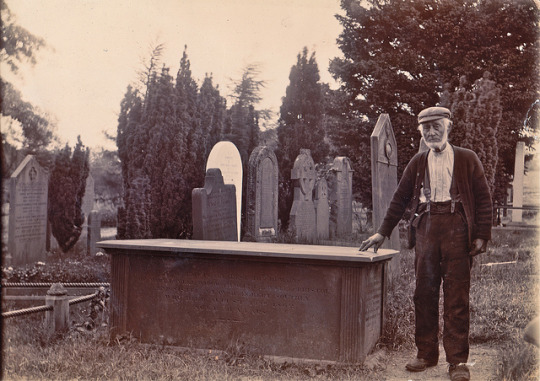
Old Man at the Grave of Mary Fricker Lovell, Albumen Print, Circa 1900 by lisby1 on Flickr.
Flickr OP: The visible side inscription on the chest tomb reads: "Near this place rest the remains of Mary Lowell, Widow of Robert Lovell of Bristol, and sister in law of Robert Southey, who died August 10th, 1862, aged 91 years." This photo was taken in the cemetery of St. Kentigern Churchyard, Crosthwaite, Cumbria, England. While the man in the photo appears to be visiting Mary Lovell, he is more likely posing at the tomb of the poet Laureate Robert Southey, with whom Mary Lovell lived for her entire life after her husband Robert Lovell's death left her a penniless widow. Here is the restored chest tomb today: www.flickr.com/photos/summonedbyfells/3338634834/. You can also see it here and match it against the surviving tombstones: www.britainunlimited.com/Biogs/Southey.htm. The monument commemorates Southey, his wife Edith, his sister in law Mary, and his daughter Katherine. From "A Passionate Sisterhood: The Sisters, Wives and Daughters of the Lake Poets" "At the close of the 18th century, the Fricker sisters wed three close friends, two of whom would indelibly shape Romantic literature. Sexy, impulsive Sarah found her match in Samuel Taylor Coleridge ["Rhyme of the Ancient Mariner"] ; Mary, the intellectual one, married Robert Lovell, who left her a widow at 25; and self-effacing Edith, given to depression, won Robert Southey [poet laureate of England 1813-1843, and author of the children's story "The Three Bears"] despite his family's disapproval.... "Young Robert Lovell received an excellent education, first at the 'Blue-Coat School', or Christ's Hospital School andlater at Balliol College, Oxford University. Mary Fricker, through her work in the theatre, had met Robert Lovell, the twenty-two-year-old son of a wealthy Bristol Quaker. He led the life of a wealthy gentleman's son; like many young bucks of the day, he was interested in pugilism and blood sports and, on the face of it, had little in common with Southey. But he had similar democratic sympathies and poetic ambitions and when the Fricker sisters introduced the two men, they were instantly attracted to each other and became great friends. Four years older than Southey, Lovell too had been to Balliol, where a brilliant career had been predicted. His relationship with Mary met with considerable disapproval. She had no money, she was an actress, and she was not a Quaker: she was thus totally ineligible. Lovell, a `birthright' Quaker who was expected to marry within the faith, was warned that his family would disinherit him if he married Mary Fricker." "Mary and Robert met when he was a young Quaker residing at Bath and the first volume of his poetry was published out of Bath. On 20 January Mary married Robert Lovell, whose family promptly threw him out and withdrew their financial support." "On 3 May, 1796, Robert Lovell died, from 'fever'. He had been taken ill at Salisbury but had insisted on continuing his journey home despite bad weather. His death left Mary a widow at twenty-five with a baby son and no money. Coleridge helped to nurse his friend through his illness, being with him when he died. . . . Robert Lovell's sufferings were so terrible Mary could not bear to stay in the same room with him. 'All Monday night I sate up with her - she was removed to the kitchen, the furthest room in the House from her Husband's Bed - chamber . . . It was, you know, a very windy night - but his loud, deep, unintermitted groans mingled audibley with the wind, whenever the wind dropped, they were very horrible to hear, and drove my poor young Sister-in-law frantic . . . At one o'clock the Clock in the Kitchen went down. "Ah! (said She) it is stopt . . .(A long pause) O God! O God!" (A Passionate Sisterhood, Kathleen Jones, p. 51) "Mr. Lovell...fell ill of fever, died, and left his widow and child without the slightest provision." (The International Magazine of Literature, Art and Science, Volume 4, Issue 2, September 1851) "The death of (Southey's) brother-in-law and brother-poet, Lovell, occurred during his absence abroad, and Southey on his return set about raising something for his young friend's widow. She afterward found a home with Southey--one of the many generous and affectionate acts of his busy life." According to Wikipedia: "Lovell's father refused all help to his daughter-in-law Mary on the grounds of her having been an actress, and she and her infant son turned to Southey for support. She lived in his family during his life, and afterwards with his daughter Kate until her death at the age of ninety. The son, Robert Lovell the younger, settled in London as a printer in 1824. Some years afterwards he went to Italy and then disappeared. Henry Nelson Coleridge journeyed in quest of him, but no trace was ........................
#robert southey#mary fricker lovell#robert lovell#lake poets#cumbria#united kingdom#england#poets#edith fricker southey#chest tomb#cemetery#old man#victorian#st.#kentigern#crosthwaite#poet laureate
2 notes
·
View notes
